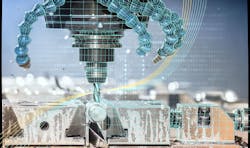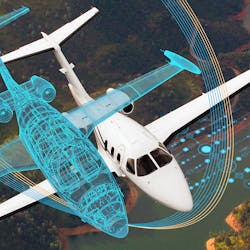What’s the Difference Between a Simulation and a Digital Twin?
Digital models are used in a variety of applications and development workflows. They can vary in degree in how they match a physical device. Models can be used as a digital twin (see figure) or in simulations in addition to models used to design a system.
A computer-aided design (CAD) model is a representation of a physical entity, and it’s typically used to describe what a physical entity will look like. This can be a 2D or 3D architectural model of a building or a device such as a car. The CAD model provides dimensions and possibly descriptions of materials that would be used in construction.
A digital twin is a CAD model that has the latest sensor data associated with a matching physical device. A digital twin is often used in process control and product lifecycle management (PLM) to help monitor or control a remote system. The model doesn’t necessarily need to exactly replicate the physical device. It may even be a 2D representation, but it’s typically combined with other models to provide a context for the information that can be presented or examined.
A digital twin is a model that includes the last sensor information for a matching physical device. (Courtesy of Mentor, a Siemens business)
Most process-control systems that deliver sensor data to a control program provide at least a limited digital model of a component within the system. However, these days, the model can be more robust and combined with other tools like augmented reality (AR). For example, a heat sensor might show what part of a device is hotter by showing that portion of a model using false coloring with red indicating higher temperatures.
Digital models used in simulations often have the same type of sensor information and controls of a digital twin, but the information is generated and manipulated as part of the simulation. The simulation may replicate what could happen in the real world, but not what’s currently happening.
Start Simulations with a Twin?
A digital twin could be used as a starting point for a simulation model that perhaps extrapolates how a system would operate in the future. The degree and accuracy of these simulations can vary depending on the implementation of the simulation and what type of results are desired. For example, a digital twin of a gas engine could simply track material consumption, power output, and heat output, but not the actual movement of components within the engine. This level of simulation may be sufficient for checking out how a vehicle would operate when using such an engine.
On the other hand, if the desired results involve how durable a particular part would be within the engine, then the level of detail with respect to the engine would have to be greater. Likewise, simulation of a self-driving car may need to know the output and control characteristics of the engine, but not the details within the engine.
Software that uses CAD designs, digital twins, and simulation models may share all of these aspects, depending on their function, although often a specific tool will create and manipulate a model. For example, a CAD drawing package may be used to create a digital model, and then a process control system would use that model as the basis for a digital twin. That software may provide the linkage between the digital twin’s sensors and controls with those in the real world.
Likewise, a model used in simulation may have characteristics added so that physical simulation is possible. This might include details about the virtual materials used in the model, which in turn would enable the simulation software to replicate how the model will react during the simulation.
Any system component may incur different models that vary in the degree they replicate the actual component, as well as how they react and what kind of information can be associated with them. The models may have different purposes, but they may also share common descriptions such as details about dimensions, material attributes, etc. Many models will be used by multiple applications for different purposes, from showing the status of a current system to simulating a device that has yet to be constructed.
About the Author
William G. Wong
Senior Content Director - Electronic Design and Microwaves & RF
I am Editor of Electronic Design focusing on embedded, software, and systems. As Senior Content Director, I also manage Microwaves & RF and I work with a great team of editors to provide engineers, programmers, developers and technical managers with interesting and useful articles and videos on a regular basis. Check out our free newsletters to see the latest content.
You can send press releases for new products for possible coverage on the website. I am also interested in receiving contributed articles for publishing on our website. Use our template and send to me along with a signed release form.
Check out my blog, AltEmbedded on Electronic Design, as well as his latest articles on this site that are listed below.
You can visit my social media via these links:
- AltEmbedded on Electronic Design
- Bill Wong on Facebook
- @AltEmbedded on Twitter
- Bill Wong on LinkedIn
I earned a Bachelor of Electrical Engineering at the Georgia Institute of Technology and a Masters in Computer Science from Rutgers University. I still do a bit of programming using everything from C and C++ to Rust and Ada/SPARK. I do a bit of PHP programming for Drupal websites. I have posted a few Drupal modules.
I still get a hand on software and electronic hardware. Some of this can be found on our Kit Close-Up video series. You can also see me on many of our TechXchange Talk videos. I am interested in a range of projects from robotics to artificial intelligence.



